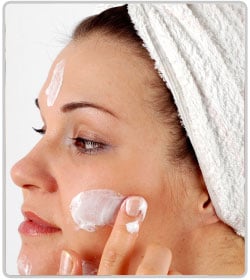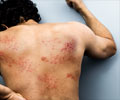- Herpes Zoster - (https://www.ncbi.nlm.nih.gov/books/NBK441824/)
- Presentation and Management of Herpes Zoster (Shingles) in the Geriatric Population - (https://www.ncbi.nlm.nih.gov/pmc/articles/PMC3684190/)
- People at High Risk for Severe Varicella - (https://www.cdc.gov/chickenpox/hcp/index.html#high-risk-people)
- Post-herpetic Neuralgia: a Review - (https://pubmed.ncbi.nlm.nih.gov/26879875/#)
- TENS - an alternative to antiviral drugs for acute herpes zoster treatment and postherpetic neuralgia prevention - (https://pubmed.ncbi.nlm.nih.gov/22250036/)
How is shingles treated?
The main treatment goals of shingles are to reduce the pain and to prevent the spread of the disease.
Shingles, usually, disappears on its own within a few weeks of its initial appearance. However, timely treatment will help to avoid complications, such as Post Herpetic Neuralgia, besides speeding up the healing process and easing the pain.
The following medicines are administered while treating shingles(6✔ ✔Trusted Source
Presentation and Management of Herpes Zoster (Shingles) in the Geriatric Population
Go to source)-
- Anti-viral drugs such as acyclovir, valacyclovir, famciclovir are administered to reduce the intensity of the symptoms. These drugs must be administered within 72hrs of the appearance of the rash
- Pain relievers, such as opioids, are given to ease the pain
- Anti-inflammatory drugs, such as corticosteroids, are administered to minimize inflammation and to reduce the risk of post herpatic neuralgia
- Antibiotics - maybe required in case of bacterial infection appearing with rash
A person affected with herpes zoster in the forehead area would need an emergency consultation from an ophthalmologist as the infection can, at times, cause severe eye problems. In the event of ophthalmic herpes (when the eye is infected with the herpes virus), the treatment would usually involve anti-viral eye drops along with oral drugs(1✔ ✔Trusted Source
Herpes Zoster
Go to source).
A patient with herpes should be kept away from anyone who is immune-compromised or has low immunity until the blisters have dried up (usually 7-10 days). The following belong to the high -risk group, who should avoid coming in contact with shingles-affected individuals(7✔ ✔Trusted Source
People at High Risk for Severe Varicella
Go to source) -
- Newborn,
- Old people
- Organ or bone marrow transplant patients
Two to three weeks time off from work maybe needed after an attack of shingles.
Post-herpetic Neuralgia - This can be a difficult condition to treat and sometimes medications like Tricyclic anti-depressants, gabapentin, and opioid analgesics maybe required(8✔ ✔Trusted Source
Post-herpetic Neuralgia: a Review
Go to source).
A type of treatment, called TENS ( or Transcutaneous Electrical Nerve Stimulation), can be carried out(9✔ ✔Trusted Source
TENS - an alternative to antiviral drugs for acute herpes zoster treatment and postherpetic neuralgia prevention
Go to source). In this treatment, electrodes are attached to the skin and low amount of electricity is sent to the affected nerves to block the pain sensation.









